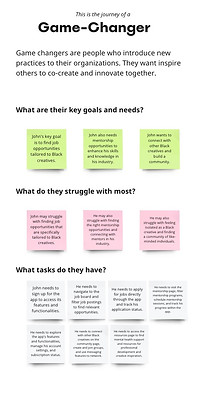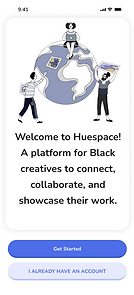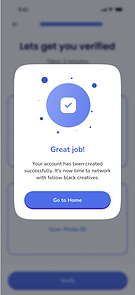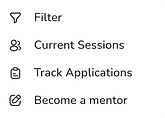A LITTLE ABOUT ME
Hi, I'm Fifi!
I'm on a mission of self-discovery and personal growth. I'm constantly chasing my purpose and grabbing every opportunity with excitement. Life's transformations inspire me to learn from the past and become a better version of myself. From a young age, I didn't have ready-made toys or technology, so I became a master of creativity, crafting my own toys, dolls, and shaping items from clay. This creative spirit stayed with me even after coming to America, where I continued to draw, write, dance, vlog, and play instruments. It's safe to say that I love anything that allows me to express myself.
Fast forward to my senior year of high school, when I once again delved into the art world. Designing a website for a blog over the summer stole my heart and ignited my passion for design. The process of planning, designing, and presenting became my true love. It was the first time since childhood that I felt such deep passion. This newfound hobby led me to focus on modeling and managing a fashion page on Instagram. Through this journey, I underwent profound self-reflection, fully embracing my creative, artistic, and imaginative identity. Accepting and nurturing this part of myself, I discovered the goals I wanted to pursue.
And now, in this exciting new chapter, I'm filled with enthusiasm to embark on a career as a UX/UI designer, specializing in interactive UI. Join me on this thrilling journey of creativity!
Check out my work!

Huespace
A Networking App
for Black Creatives
Huespace is a groundbreaking digital platform designed specifically for Black creatives. It serves as a dynamic hub where Black artists can connect, collaborate, and showcase their talent
Huespace strives to transform the creative industry by empowering Black creatives, fostering diversity, and addressing the specific challenges they face.
Born out of a pressing need, Huespace has emerged through extensive research and community feedback to provide a dedicated platform for Black creatives to thrive, promoting representation and inclusivity in the broader creative landscape.
March 2023

Context
What is the problem?
Black creatives face challenges like limited representation, difficulty connecting, self-doubt, and insufficient mental health resources, hindering their artistic growth and well-being.
Solution!
Huespace addresses these challenges through networking, professional development, and mental health support, empowering Black creatives in a nurturing environment.
Objective
Huespace aims to enhance visibility, connect Black creatives with opportunities, and prioritize well-being, fostering empowerment and reshaping the creative industry.

Research Process

Understanding the Users

Ideation
Card Sorting
Importance
I find card sorting to be crucial in the design process as it helps me gather valuable data on users' needs and preferences. By involving users in the sorting process, I gain insights into their main priorities and understand which features are most important to them. This data-driven approach allows me to make informed decisions and develop the necessary features that align with the users' expectations.
Desired Outcome
The goal of card sorting is to identify features that align with the ultimate goals of the design challenge for black creatives. By understanding the main needs and preferences of black creatives, informed decisions can be made to develop an app that provides a supportive and empowering environment, celebrates diversity, offers mental health support, and provides tailored resources.

Card Sorting Analysis


Survey
Importance
The importance of this survey lies in understanding the needs and preferences of Black creatives and addressing the challenges they face in the creative industry. By gathering their thoughts and opinions, the goal is to develop an effective and useful digital platform that meets their specific needs.
Desired Outcome
The desired outcome is to provide a safe and supportive space where Black creatives can thrive personally and professionally, celebrate diverse voices, and access tailored mental health support and resources. The survey also highlights the importance of cultural sensitivity, data security, and inclusivity in the platform's design and implementation.
Survey Analysis



Insight Gained
Black creatives face challenges of self-doubt, lack of representation, and difficulty connecting with others who share similar experiences.
Valuable features for a digital platform for Black creatives include in-app group chat, virtual events and workshops, mental health resources and support, and opportunities for employment and collaboration.
Concerns about safety and privacy of personal information on a digital platform need to be addressed.
Involving Black creatives in the development process is crucial for ensuring cultural sensitivity and relevance to their experiences and needs.
Competitors
I used the SWOT competitor analysis method to assess the strengths, weaknesses, opportunities, and threats of the competitors




Defining value/principle
These principles and ethics have been identified to make sure that the app for black creatives is developed in a responsible and ethical way. The main goal is to create a positive user experience and bring value to the lives of black creatives.

Information Architecture
Customer Journey



User Flow
I developed a user flow to outline the path that users would take within the app. The user journey begins on the home page and then progresses into various categories.
START -> Discover app through social media ad -> Explore app's screenshots -> Explore app's features and functionalities -> Read reviews and ratings -> Decides to download app -> Onboarding process -> Sign up for the app -> Fills out user validation form -> Customize profile page -> Explore page launches -> Interactive walkthroughs -> Homepage -> Browse explore page -> Go to job board -> Check out mentorship page -> Connect with other Black creatives on community page -> Check out resources page -> Go to profile settings -> Manage account settings -> Edit profile information -> Access contact information, terms and conditions, privacy policy, and FAQ -> Close app -> END


Site Map
I created the sitemap by studying competitor analysis, reviewing user research, and analyzing survey responses. The sitemap includes main menus and submenus to ensure easy navigation and access to different features. It was designed with the goal of providing a smooth user experience.


Style Guide
Name & Logo
I generated various name ideas that capture the purpose of the app and its target audience. After careful consideration, I selected the name "Huespace." Following that, I explored different logo designs, specifically focusing on creating an iconic logo that represents the app.
Naming

Final logo Guide
Logo Experiment


Illustrations Created

Design System






Implementation
Low fidelity Skecth



High fidelity - wireframe






























Final Prototype
In the final stages of prototyping, I followed a series of steps to refine the app. I tested the app and incorporated feedback from peers. I removed unnecessary screens, improved the UX writing for consistency, and made the screens visually cohesive. I also updated the avatar pictures to better represent the target audience.


John downloads the app and completes the onboarding process. After onboarding, John creates an account















John verifies himself for privacy and security purposes.




John is directed to the Feed Page, which serves as the home page. He explores his feed and checks notifications. John wants to discover new creatives, so he visits the explore page.




Interested in joining a new group, John navigates to the community page. He can also access his existing groups and stay updated on the conversations happening there. He checks out the new trends page and views posts from people he follows.






John is looking for job opportunities, so he accesses the job board feature. He reviews his job notifications, including his submitted applications, and applies for new jobs.




John is interested in mentorship programs, so he visits the mentorship page to see his current sessions.




Finally, John checks his profile and settings on the sidebar. After completing his objectives for the day, he logs out
Evaluation
User-Centric Design: In the design process, my emphasis was on delivering an outstanding user experience. Thorough research was conducted, always prioritizing user perspectives over assumptions or personal preferences. The goal was to create something tailored to their actual needs.
Distinctive UX Writing: Special attention was given to UX writing to establish a unique app language. The challenge was to find a sweet spot between uniqueness and user familiarity, avoiding confusion with other apps. Ensuring the language was both distinct and user-friendly was a top priority.
Accessibility and Aesthetics Harmony: Juggling accessibility and aesthetics in visual design was a challenge. I avoided too many personal illustrations for wider user appeal. Achieving the right balance meant considering accessibility for different genders and styles, especially in onboarding, logos, buttons, and the overall app vibe. Including universally inviting illustrations and styles was crucial.






